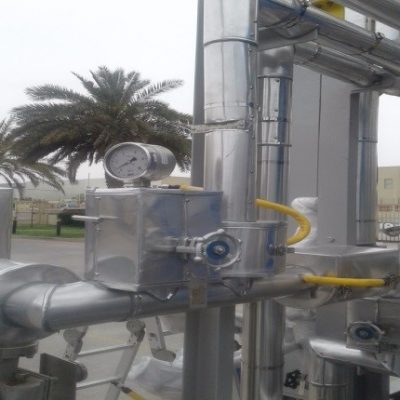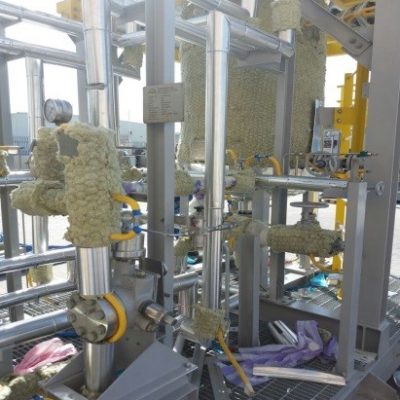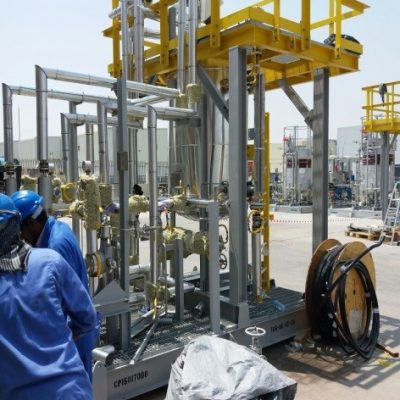Steam tracing refers to using steam to indirectly elevate the temperature of a product using jacketed pipes or tubing filled with saturated steam. Steam tracing is often the preferred alternative in industrial plants where the steam distribution and return system is wide spread and in close proximity to the piping and equipment to be heat traced. One of the best ways to maximize steam tracer efficiency is to use steam that would otherwise be wasted; in other words, flash steam. The return on the investment the plant makes in the equipment required to recover this flash steam is quickly paid back, typically within a year. On the negative side, steam is more expensive to install and maintain than electric heat tracing. Periodic leaks and inadequate controls in a steamtraced system waste energy and demand frequent repair and replacement.
1. External Tube Tracers
External tube tracing consists of one or more ½” or 1” tubing; clipped or wired on to the main product line. The maximum heat flow is achieved when the tracer is in tight contact with the product line. Where the temperature difference between the tracer and the product is low, the tracer may be welded to the product line.
2. Cemented Tracers
Cemented steam tracing is similar to external tube tracing except that a conductive compound is smeared between the two pipes so that more surface area is available for heat transfer. The cemented tracers are anchored with stainless steel straps to ensure that the steam tracers and heat transfer compound are permanently fixed to the surface of the process pipe and insulation is applied thereafter.
3. Fully Jacketed Pipe
If the fluid line or process pipe temperature is required to approach closely that of the available steam, a jacketed pipe arrangement may be essential. A steam-jacketed pipe has a larger pipe surrounding the product pipe. Steam is carried in the annular region between the two pipes, which allows the heating medium to directly contact the entire surface of the process pipe, providing maximum heat transfer area. Typically, a jacketed system will maintain the product near the steam temperature (when there is little or no flow in the pipeline).
Ideally jacketed lines should be constructed in no more than 20 ft lengths and the condensate removed from each section. Steam should enter at the highest end so that there is a natural fall to the condensate outlet. When it is considered impractical to trap each length, a number of lengths up to an approximate total of 80 to 100 feet may be formed together in moderate climates, but in extremely cold parts of the world 40 feet should be the maximum. As a general guide, refer to the table below for steam connection sizing of jacketed lines.



